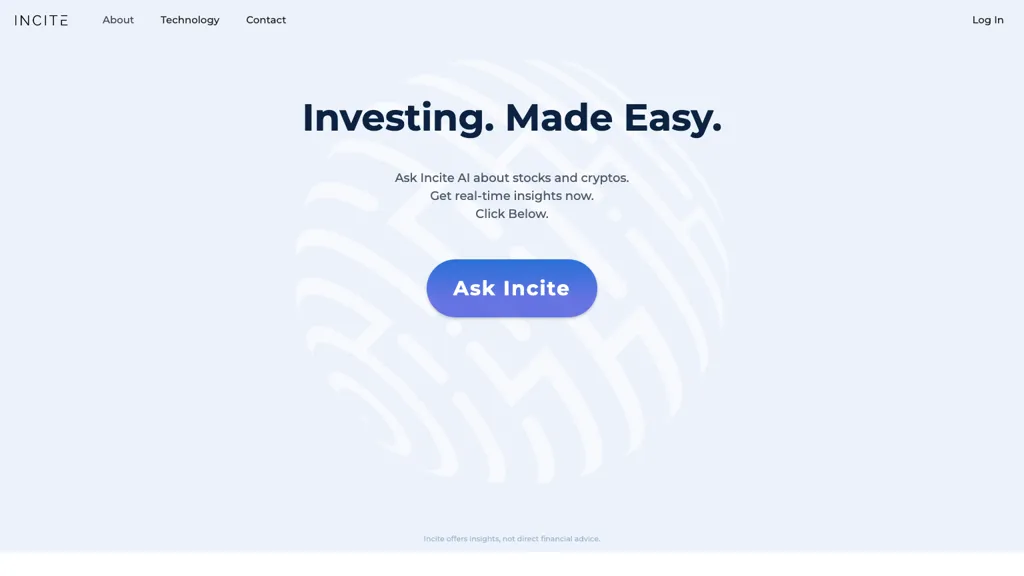20 Great News To Selecting AI Stock Picker Analysis Sites
20 Great News To Selecting AI Stock Picker Analysis Sites
Blog Article
Top 10 Tips To Evaluate The Accuracy Of Ai Trading Platforms That Predict Stocks Or Analyze Trading Data
It's important to assess the reliability and accuracy of AI stock predicting platforms and trading platforms in order to make sure you are relying on tools that deliver solid insights. Here are the best 10 ways to test these platforms.
1. Backtesting Results
What to look for: Ensure that the platform permits users to run back-tests in order to see how accurate their predictions were using previous data.
Why It Matters : Backtesting can be used to test an AI model through comparing the predictions with the results of previous tests.
Find platforms that allow you to customise backtesting parameters, like the duration of time and asset classes.
2. Real-time Monitoring of Performance
What to look for: Find out how the platform performs when it is compared to the current market conditions.
What's important: The platform's real-time performance provides a much better gauge of its efficiency instead of relying solely on past backtesting.
Tips: Try a no-cost trial account or demo account to compare real-time market predictions against actual movement.
3. Prediction Error Metrics
What to be looking for: To measure the accuracy of your forecasts, you should evaluate measures like mean absolute error (MAE) and root mean squared error (RMSE) as well as R-squared.
What is the significance of these indicators are a method to gauge how closely predictions are in line with the actual results.
Tip: Platforms that publicly disclose their metrics tend to be more transparent and reliable.
4. Win Rate and Ratio of Success
What to Look For Look for the platform's win rate (percentage of predictions that are correct) and the success rate (profitability of trading basing on predictions).
Why It Matters The high success ratio and win percentage indicate higher degree of predictive accuracy and thus a higher chance of profit.
TIP: Beware of platforms that claim false win rates (e.g. 90%) %+), because the system cannot be perfect.
5. Benchmarking against Market Indices
What to Look for: Compare predictions and the performance of the platform against the major market indexes.
What it does: It helps determine whether the platform performs better or worse than the market as a whole.
Look for consistent gains over a long period of time.
6. Consistency Across Market Conditions
What to look out for: Examine how the platform performs under different market conditions.
What is important The platform must be able of performing in any markets, not just when the conditions are favorable.
Try the platform's forecasts during periods of volatility and market downturns.
7. Transparency in Methodology
What to look for How to recognize AI algorithms and models (e.g. reinforcement learning, neural networks, reinforcement learning, etc.).
Why It's Important: Transparency allows you to assess the scientific and technical reliability of a system.
Avoid platforms using "black box models" which don't provide a clear explanation of how they generate predictions.
8. User Reviews and Tests by Independent Parties
What to look for Reviewer reviews, and search for independent testing or third-party reviews of the platform.
Why it matters Why it matters: Independent test results and reviews provide objective insights on the platform's accuracy and performance.
Tips: Look into forums such as Reddit, copyright, or financial blogs for user experiences.
9. Risk-Adjusted Returns
What to look out for What to Look For: Assess the platform's performance by using risk-adjusted metrics like Sharpe Ratios or Sortino Rateios.
What is important What is important? on the degree to which risk is taken to produce returns. This gives the most complete view of the performance.
Sharpe Ratios higher than 1 suggest higher returns. risk-adjusted.
10. Long-term record-breaking records
What to Watch Out For Review the effectiveness of the platform over a long time (e.g. over a period of 3-5 years).
What's the point. Long-term performance is a better indicator for reliability than results that are short-term.
Avoid platforms with only short term success or cherry picked results.
Bonus tip: Use an account with a demo version
Demo accounts or free trials allow you to check the accuracy of the prediction system in real-time without the risk of putting your money at risk. This gives you the chance to test accuracy and performance.
Utilize these suggestions to fully examine the accuracy, performance and reliability of AI stock prediction and analysis platforms. It is then possible to select a platform that best aligns with both your trading goals, and your level of risk. It is crucial to keep in mind that there is no perfect platform. The best approach is to combine AI insights with your own research. Check out the recommended best ai for trading for more recommendations including ai stocks, best ai stock trading bot free, ai for investing, chatgpt copyright, using ai to trade stocks, options ai, ai for stock trading, ai for stock trading, chatgpt copyright, stock ai and more.
Top 10 Tips To Assess The Regulatory Conformity Of Ai Stock Predicting/Analyzing Trading Platforms
Regulatory compliance plays a crucial role in evaluating AI platforms for stock prediction and analysis. Compliance is essential because it ensures the platform is in compliance with rules and legal frameworks. It also safeguards users' personal information. These are the top 10 guidelines for evaluating regulatory compliance.
1. Verify your license and registration
Regulatory Authorities: Ensure that the platform registered with the relevant regulatory bodies (e.g. SEC US, FCA UK and ASIC Australia) and also has an authorization.
Verify the broker collaboration If your platform is integrated with brokers and brokers, be sure they are also licensed and regulated.
Public records: You can look on the website of the body that regulates it to find out whether the platform has been registered and whether there have been any violations in the past.
2. Check for Data Privacy Compliance
GDPR: Ensure that your platform is compliant with the General Data Protection Regulation.
CCPA : California Consumer Privacy Act (CCPA) compliance should be checked by the users.
Policy on handling data: Make sure you review the platform's privacy policies to know how users' data is gathered and stored.
3. Evaluation of Anti-Money-Laundering Measures
AML policies: Make sure the platform is equipped with strong AML policies that are in place to prevent and detect the laundering of money.
KYC Procedures: Verify whether the platform has procedures in place to confirm the identities of its users.
Monitoring transactions: Ensure that the platform monitors transactions to spot suspicious behaviour and inform authorities about suspicious activity.
4. Verify that you're in compliance with Trading Regulations
Market manipulation: Make sure the platform has safeguards to protect against market manipulation such as spoofing or wash trading.
Order types: Ensure whether the platform is in compliance with the regulations regarding types of orders.
Best execution: Make sure the platform adheres to best execution practices, ensuring trades are executed at best available price.
5. Cybersecurity Assessment
Data encryption. Your platform should use encryption of user data both in transit and at rest.
Response to incidents. Verify that there is an incident response plan for the platform to deal with cyberattacks as well as data breaches.
Verify certifications.
6. Transparency and Disclosure A Review
Disclosure of fees. Be sure that all charges and fees are disclosed clearly, including any hidden charges or fees.
Risk disclosure: Make sure that the platform has explicit risk disclosures, particularly when it comes to high-risk trading or leveraged strategies.
Performance reporting: Determine if the platform provides transparent and accurate performance reports for its AI models.
7. Make sure you're in compliance with International Regulations
Trading across borders When you trade internationally, be sure the platform you use is in compliance with all applicable regulations.
Tax reporting: Verify if there are reports or tools to assist you with tax laws.
Conformity with international sanctions: Ensure that your platform is in strict compliance with these and doesn't allow trading between countries or entities that are banned.
8. Assess record-keeping and audit trails
Transaction records: Ensure that the platform maintains detailed records of all transactions to ensure audit and regulatory compliance.
Logs of user activity: Check if your platform keeps track of all activities by users, including transactions, logins, and account settings changes.
Audit-readiness: Check if the platform is equipped to provide all necessary documentation and logs for a possible regulatory audit.
9. Check for compliance with AI-Specific Regulations
Algorithmic trading rules: If you're using a platform that allows algorithmic trading, ensure it is compliant with the relevant regulatory frameworks such as MiFID II or Reg SCI which are in Europe and in the U.S.
Fairness and bias: Determine whether the platform monitors and mitigates biases in its AI models to ensure fair and ethical trading.
Explainability: As required by specific regulations, the system must provide clear explanations of AI-driven predictions and decisions.
Review User Feedback and the Regulatory History
Reviewer feedback: Go through user feedback and compare it to the platform's norms of the industry.
Review the history of regulations to see if there were penalties or fines for infractions of regulations.
Third-party audits: Determine that the platform has regular audits by a third party to ensure compliance with regulations.
Bonus Tips
Consultations with a lawyer: You may need to speak with a lawyer in order to determine whether the platform meets relevant regulations.
Trial period: Take advantage of a free demo or trial to test compliance features on the platform.
Support for customers: Make sure the platform provides support for questions or issues with respect to compliance.
These guidelines will allow you to assess the compliance of AI trading platforms which predict/analyze stock prices. In this way you'll be able choose a platform which operates within legal frameworks, and protects you. It is essential to be in compliance since it not only reduces the risk of legal liability, but also builds trust and confidence for the platform. Read the top ai options advice for site recommendations including ai stock investing, chart ai trading, ai stock predictions, ai options trading, best ai for stock trading, ai trading tool, ai software stocks, ai stock prediction, ai stock predictions, ai copyright signals and more.